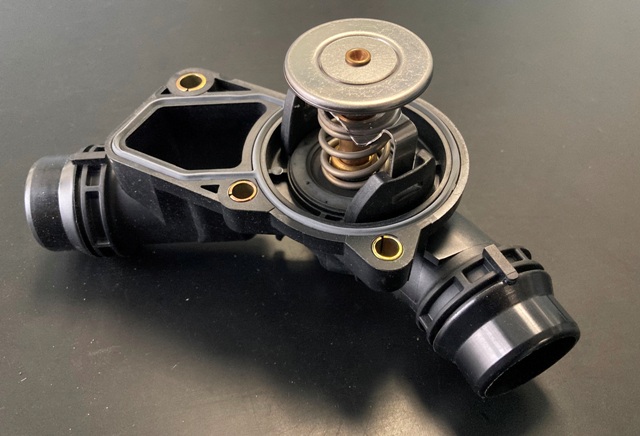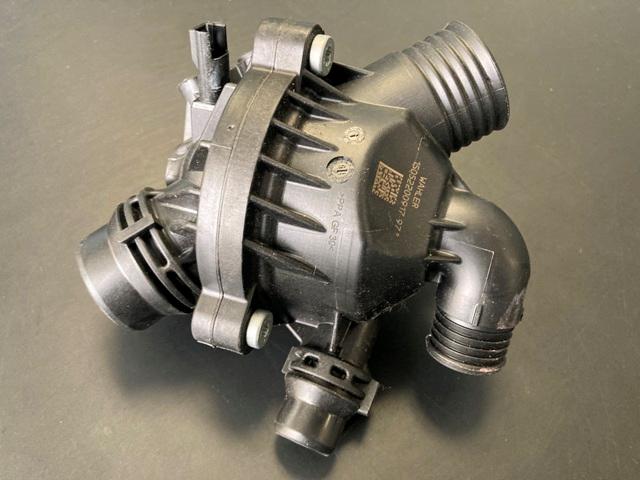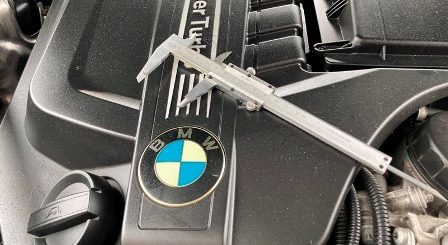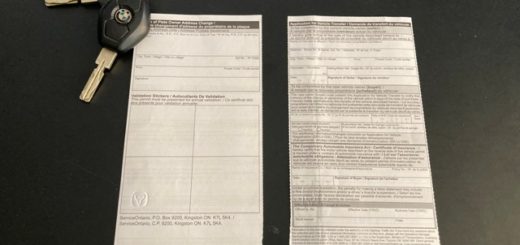How Engine thermostat Works
How Engine thermostat Works: Liquid cooled engines use closed circuit cooling system to remove heat and keep optimal engine temperature. Coolant flows inside engine block passages transferring heat from engine to radiator. Hot coolant is pumped using a water pump to radiator where heat is removed by electrical fans or front grill natural air flow. Coolant then is sent back to engine repeating cooling process.
What is Engine Thermostat
Engine Thermostat is a temperature operated valve. Thermostat remains closed when engine coolant is cold and opens to allow coolant flow when engine temperature reaches a certain degree. Thermostat valve regulates circulation between engine and radiator. Engines temperature for optimal operation, reduced pollution and maximal power is about 90 Celsius.
When engine is cold, thermostat remains closed impeding coolant circulation to reach engine nominal operating temperature faster. When engine temperature rises to 80-90 Celsius, thermostat opens circulating coolant to radiator removing heat, this process will be repeated continually.
Prices of thermostats vary greatly deepening on design, from $20 for a simple thermostat to over $200 in some cases when thermostat is incorporated into thermostat housing.
How Engine Thermostat Works
Thermostat is a valve which reacts to high and low temperatures. A cylinder located in center of thermostat is filled with Wax which melts at temperatures 80 to 90 Celsius. As wax melts it expands allowing thermostat valve to open about 2cm or so, coolant will start circulating between engine and radiator. If temperature drops to cold, wax will harden closing thermostat valve, blocking coolant flow to radiator.
Symptoms of a Failing Thermostat
1) Engine temperature high
Temperature gauge needle stays higher than normal middle position, suggest thermostat remains in closed position longer than normal.
2) Unstable engine temperature
There are situations when temperature gauge needle in your dashboard is unstable (if your car has one). Temperature moves in unpredictable pattern, it shows cold when engine should be at normal operating temperature or overheating withing a short period of time after start up.
3) Engine temperature low
Temperature gauge needle stays lower than normal position, indicates thermostat remains in open position longer than normal.
4) Check Engine Light
On some designs, thermostat housing is equipped with sensors to monitor thermostat operation. If a problem is sensed, check engine light t will be triggered. Common trouble codes usually are P0597, P0128, P0126.
Engine Thermostat Failures
Apart from thermostat housing gasket leaking coolant which is not really thermostats fault, there are two common thermostat failures:
1. Thermostat Stuck Open
When thermostat fails in open position and does not close properly, engine temperature will remain lower that optimal. Driving with engine below normal operating temperature is not dangerous short term, but fuel economy and pollution will suffer greatly.
Engine thermostat stuck open can also cause misfires and reduced engine power. Some thermostats are designed from factory to fail in an open position. Open position failures are less dangerous and are preferred compared to failures in closed position.
2. Thermostat stuck closed
If thermostat fails in closed position, your engine will most certainly overheat. A warning temperature light and audible signal will be triggered, and for good reason.
Overheating will destroy a car engine in a short period of time, sometimes within minutes or few kilometers of driving. If your engine overheats do not continue to drive your car. Shut down A/C, open heating system on max temperature setting with full blast on, pull over as soon as possible/safe to do so and turn your engine off.
3. Thermostat Coolant Leak
In some cases, thermostat gasket and/or thermostat housing fails and causes coolant leak. In modern cars thermostat is enclosed on a plastic housing and is replaced as a unit. As a result of heat and cold cycles, thermostat housing plastic becomes brittle and develop cracks which will lead to coolant loss and engine overheating.
Another common failure is thermostat gasket. All gaskets have a limited lifespan, as cars get older gaskets will develop leaks,, thermostat gasket included. That’s why thermostat should be considered an maintenance item and better to be replaced as a preventive maintenance instead of waiting until failure.
Thermostat failure can be dangerous as vast majority of thermostat failures result in engine overheating and can easily cause severe engine damage.
(If you are also looking for a fast and easy solution to sell your car, more here on “How To Sell Your Car Fast In Ontario”. )
Comments: If you have any questions or suggestions related to this post or Used Car Toronto in general, don’t hesitate to use comment section below.















